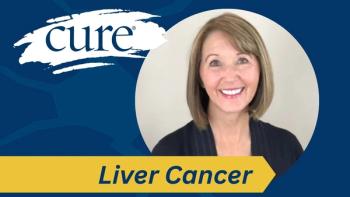
Treatment Challenges in Advanced Lung Cancer
Transcript:
Philippa Cheetham, MD: For patients, when you first meet them and you’re having discussions about treatment options, how much expectation is there to discuss the long term, up front? Do you try and give patients the big picture of what to expect early on in the consultation, or is it sort of a building process, day-by-day, as you form more of a relationship with the patient?
Sara F. Martin, MD: Usually, it builds. But there are patients that want as much information as possible up front. That’s how they cope with their illness. But for most patients, building a relationship of trust and building some rapport helps to have those detailed conversations as things change about an ongoing discussion of what’s important to them and how we can best maximize their quality of life.
Philippa Cheetham, MD: Dr. Osmundson, when you see patients in the office, and you’re obviously specializing in managing patients with early- and late-stage lung cancer, what are the frustrations in your current practice, today, that you see time and time again? You think, “If we could only do this better, or change this.” Is it getting patients from other centers sooner? Is it that these side effects are still a huge obstacle for getting patients through treatment? What are the frustrations that you face on a daily basis, in which you’d like to see improvement in the coming years?
Evan C. Osmundson, MD, PhD: Well, I would say the frustrations often come in the management of stage IV patients. As Dr. Horn had mentioned, we’re doing better, but we’re not where we want to be. You’re sitting with a patient and sometimes they do want to have that conversation about, “Where is this going?” “What are the numbers, doctor?” “What am I looking at?”
As someone who went into this field to help people, you really want to be able to use your modality to help them. And with stage IV disease, I think that we’ve got a lot to do. Things are getting much better, and it’s a very exciting time for physicians and providers. But, I would say for stage IV patients, I wish I could do more for them.
Philippa Cheetham, MD: These immunotherapies are being used in many different cancers, and we’re seeing some drugs being used not just for lung cancer but other cancers. We are seeing their effects on the immune system. Do you think the future with these immunotherapies is looking into other types of cancer and saying, “Well, they’re using this drug for kidney cancer, or bowel cancer, and this is an immunotherapy agent, so let’s give it a try in lung cancer?” Do you think that’s where the immunotherapy market is going?
Evan C. Osmundson, MD, PhD: I think that’s one avenue. When you have an immunotherapy drug that works well, the question is, “If it’s working well in this cancer, can we use it in other cancers?” I think that one area of interest of mine, and this is very exciting, is the use of radiotherapy almost as an immune stimulant. Radiotherapy is used for cytotoxic effects, but it can also promote infiltration by antigen-presenting cells which can help the immunotherapy do its job better. So, there’s a lot of interesting synergy between radiation therapy and immunotherapy, and that’s an avenue that I think we’re just starting to understand.
Philippa Cheetham, MD: For patients who have immunotherapy, that try an initial drug and probably don’t do as well as you would hope, scans show progression, does that mean that the other immunotherapy drugs that are out there probably will not give the patient a good outcome either? Or, does it mean that if they do bad on one, they may actually respond much more favorably to another immunotherapy? How much do these drugs differ?
Leora Horn, MD, MSc: There are a couple of different classes that are out there. There’s a drug, ipilimumab. It is not approved in lung cancer, but it’s approved in melanoma. It targets a target on T-cells—something called CTLA-4. If ipilimumab hasn’t worked in a patient, they may respond to the PD-1 or the PD-L1 inhibitors. But, if one PD-1 inhibitor hasn’t worked, it’s unlikely that another PD-1 inhibitor is going to work. With those drugs, in my experience, and we’re lucky enough to be part of many of the early stage trials with these drugs at Vanderbilt, if one doesn’t work, the others are not likely to work. And so, instead, we look to chemotherapy or maybe combination therapies as a better option for those patients.
Philippa Cheetham, MD: Now, certainly in some cancers where patients have received immunotherapy, in rare situations, the cancer has become accelerated into this very unusual presentation. A patient may have been given an immunotherapy and the disease has just exploded, which is the exact opposite of what we would want. Do you think that there’s a lot we don’t know in terms of the long-term effects? These immunotherapy agents are relatively new and we don’t have long-term data. Do you think that there are concerns about the long-term risks for patients who are being given these drugs that we don’t have a lot of long-term data on? And also, if a patient does badly with an immunotherapy drug, is there any role for jumping in and maybe rebiopsying them before exposing them to, maybe, another newer agent or not?
Leora Horn, MD, MSc: Those patients who have rapid progression, we call them hyper-progressors. I think we can learn a lot from those patients and their tumors as to who should really be getting these agents. We focus a lot on the right biomarker for selection, and maybe we can figure out the biomarker who shouldn’t get the drug and then give it to other patients? That may be a way that this field evolves.
We’re getting more and more long-term data. One of the early trials with nivolumab, CheckMate-003, was done at our institution. The study was nivolumab given in patients at any stage. They could have had many lines of therapy in stage IV disease. They got 2 years of therapy, and then we followed them. They recently presented the 5-year data at a meeting, and it showed that 16% of patients with stage IV disease were alive at 5 years. Now, that’s pretty phenomenal when you think that 10 years ago, we said that for all-comers, stage I to IV with lung cancer, only 16% of people will be alive at 5 years. We actually have several of those patients at our institution who, now, are 7 years out. So, we’re learning more about the long-term survival.
I think what a lot of people are struggling with, with these drugs, is if they’re working, how do we tell patients it’s okay to stop? And, when do you stop? We recently saw a study that said that maybe 1 year is not enough. Maybe we need to do more? And so, when patients get to 2 years, about 6 months before, I start priming them for, “We’re going to stop. It doesn’t mean I’m not going to see you.” I do think that if we give these drugs indefinitely, there’s, first, the financial harm. But, we are going to find other things developing in patients. Who wants to come to the cancer center every 2 weeks for 10 years of your life? So, there’s a lot that we’re trying to sort out because of this really encouraging long-term survival data.
Transcript Edited for Clarity




